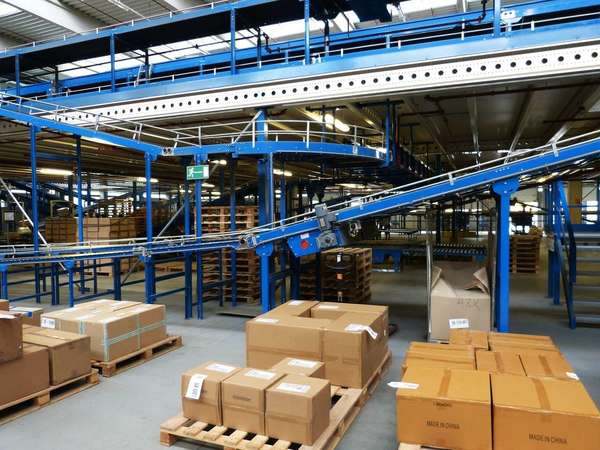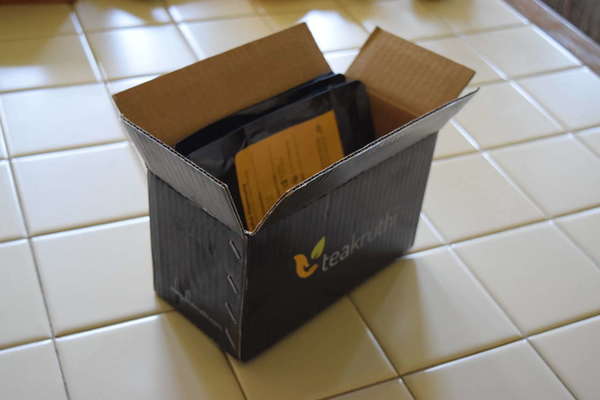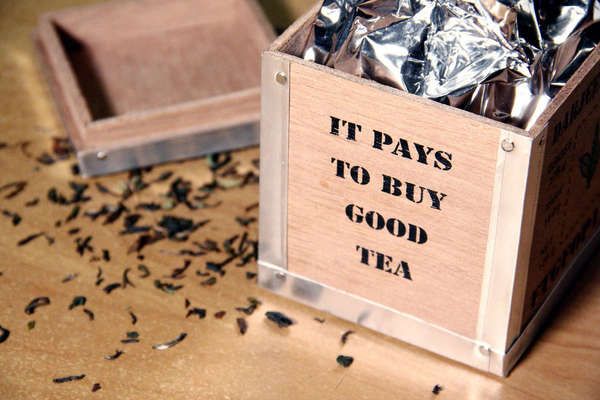Dropshipping in the Tea Industry
Wikipedia: Drop shippingLast Updated: Aug. 18, 2024
 A shipping warehouse, Photo used under Pixabay license.
A shipping warehouse, Photo used under Pixabay license.However, dropshipping of tea itself tends to be frowned upon because it usually takes the form of a retailer acting as a sales agent for a company that itself sells tea retail, usually at lower prices.
Here we explain how the benefits of dropshipping are primarily short-term, and as a business model in the tea industry, dropshipping tends to limit the growth of a company and lead to a poor experience for the customer. All of the biggest and most successful tea companies, as well as the most successful small companies, carry their own inventory. Dropshipping as a business model for selling tea, is on its way out for the world of tea, although it remains useful for retailers in other niches, and for tea companies selling isolated items that are bulkier and more expensive than the tea itself.
Pros and cons for the retailer
 Dropshipping often makes the most sense for large, heavy, and expensive items that are only ordered occasionally, such as an electric teakettle. Photo © Your Best Digs, CC BY 2.0.
Dropshipping often makes the most sense for large, heavy, and expensive items that are only ordered occasionally, such as an electric teakettle. Photo © Your Best Digs, CC BY 2.0.Advantages
By avoiding handling any goods, a seller is able to avoid expending the effort and resources associated with sourcing, stocking, and shipping inventory. This makes it very easy to start and operate a business. Essentially all that is needed is the time to create and manage a website and staff any phone-based ordering system (if the company has it at all), establish the relationship with a wholesaler, select a catalogue of teas, and the business can launch with minimal cost.The benefits of dropshipping are often greater for large, bulky items, items with a high price tag, and items that are infrequently ordered. As tea is relatively small and lightweight, and ideally ordered regularly, the benefits are minimal for the tea itself, but can be greater for supplemental items, such as high-end electric tea kettles, that might not easily fit into a tea company's standard shipping practices. It makes sense to ship such items separately,
Disadvantages
One downside of this setup is a loss of control over sourcing, stocking, and shipping. When relying on a dropshipper, the business depends on the supplier to resolve problems and complaints with shipping, and must act as an intermediary between customer and wholesaler. This intermediate step can result in miscommunication, slower resolution of problems, and a poor customer service experience overall. In addition, the business is fully at the mercy of their supplier in terms of choices and potential changes in their catalogue, stock, prices, and the quality of their products. Many companies, like teakruthi, pictured here, have their brand name and logo, and website printed on their packaging. This custom branding of packaging is less commonly available from wholesalers. Photo of Teakruthi Box / Packaging by Alex Zorach, © Alex Zorach, CC BY-SA 4.0
Many companies, like teakruthi, pictured here, have their brand name and logo, and website printed on their packaging. This custom branding of packaging is less commonly available from wholesalers. Photo of Teakruthi Box / Packaging by Alex Zorach, © Alex Zorach, CC BY-SA 4.0Because customers tend to group together multiple teas in one shipment, a tea company relying on a dropshipping model typically must choose a single supplier. They do not have the option (and advantages that come with it) of sourcing teas from multiple companies, and direct sourcing, something attractive to customers, is completely out of the question. This scenario contrasts with companies that carry their own stock; such companies can use multiple wholesalers and can also combine wholesalers with direct sourcing from tea estates. Relying on a single supplier also presents the problem that if a company wants to change suppliers, they must change every tea in their catalogue. This is likely to upset or alienate customers, if suddenly the flavor and quality of all blends change at once.
Companies based on a dropshipping model also are limited in the degree to which they can sell their own custom blends. Some wholesalers do automate the blending process and sell custom blends made on demand, but not all wholesalers offer this feature, and there is never any potential for including unique or local ingredients.
Lastly, the low barrier to entry for dropshippers can itself be a downside; it means any business built on a dropshipping model will be competing against countless other similar businesses. This high level of competition drives down profit margins for any business whose sales and marketing falls short of excellence.
Pros and cons for the wholesaler
Advantages
Wholesalers benefit from dropshipping clients by expanding their sales. Because the difficulties of changing dropshipping suppliers are greater than those faced by of a tea company that stocks and ships their own products, wholesalers can also expect dropshipping clients to be more loyal.Disadvantages
Because the dropshipping model is weaker and less flexible overall, businesses based on this model are less likely to ever break into the top tier of tea companies both in terms of sales volume and national reputation. This limits the potential for growth in sales from a particular client, and increases the likelihood that that client's sales will drop off or go out of business.In order to accept dropshipping clients, a wholesaler typically needs to build additional systems and procedures, including an ability to handle customer service complaints arriving from clients, and the capacity to rebrand the products they are shipping, hiding all evidence or mention of their own company. This additional infrastructure can be costly, and is not necessarily worth the investment for all wholesalers.
Lastly, the wholesaler has the disadvantage that whenever they dropship a private label product on behalf of a client, they do not benefit directly from building their own brand. A wholesaler with a thriving array of dropshipping clients will be earning a lot of money, but the customers of those different clients will typically see a bunch of unrelated brands. Furthermore, the secretive nature of most dropshipping relationships makes it so that clients typically do not do much (or any) promotion or referrals of the wholesaler. This places the entire burden of sales and marketing on the wholesaler, eliminating the main mechanism through which companies grow, and as such can hindering their long-term growth prospects.
Pros and cons for customers
Dropshipping is a business model that primarily benefits the retailer and wholesalers engaged in the arrangement. The customer typically does not benefit. A customer buying from a retailer that sells through dropshipping typically is buying a product that could be obtained from another company for cheaper, so they are either getting an inferior product, paying a higher price for a similar product, or both.The customer service experience is often markedly poorer. Customers are more likely to have a tough time resolving concerns or complaints when anything goes wrong with their order.
The entire setup is also likely not very transparent to the customer. The combination of lack of transparency with poor customer service experience all combine to make it less likely that customers will recommend or refer other customers to the same retailer, and in a worst-case scenario, they can result in angry or alienated customers who not only stop buying, but can post negative reviews publicly and create a multiplier effect that quickly sends the retailer into a downward spiral, forcing them to close.
In some rare cases, the customer may be getting some unique extra value from the purchase, such as a website that is organized in a way more intuitive to them, or customs blend not available elsewhere, but these are the exception, not the norm.
How to spot dropshipping as a customer
Dropshipping can be hard to detect, as both retailers and wholesalers can go through great lengths to hide the fact that they are doing it. There are red flags that shoppers can look for that are often tip-offs that a company may be dropshipping tea. Such signals include generic stock photos, descriptions with text repeated elsewhere on the web at seemingly unrelated retailers (easily verifiable by pasting product descriptions into a search engine), and a lack of customer support by phone. However, these signals are unreliable as dropshippers can rewrite product descriptions, and retailers that stock and ship their own product can sometimes use generic descriptions and/or photos provided from a wholesaler without editing them. And some legitimate tea companies handle all customer service by email. A harder-to-detect signal is if a company discontinues a tea and, when contacted, explains that they have been unable to source that tea, but you can still find identical teas online; when this scenario happens, it is usually a sign that the company is relying on a single supplier and does not control their own inventory, but it may happen infrequently.A reliable sign that a company is dropshipping is if you receive an order and the packing slip or invoice lists a different brand or company name from the company you ordered from. However, many wholesalers that provide dropshipping offer rebranded packing slips, so seeing the branding of the company you ordered from is not a guarantee that the company is not dropshipping.
The best way to prevent buying from a dropshipper is to know the price of tea of certain quality, and shop for a competitive price. Dropshippers will usually have a higher-than-market price on tea of a certain quality, especially when buying that tea in small quantities (1-4 oz).
Summary
Dropshipping is a business model in which a wholesaler acts as an intermediary and ships material sold by a retailer without the retailer having to handle anything. As a business model it is poorly-suited to selling tea, because tea tends to be lightweight and bought frequently. As such, it tends to lead to deliver poor value to customers and also limit the growth of both retailers and wholesalers. However, dropshipping can be useful for larger, more expensive, heavy items that are bought infrequently, such as high-end electric tea kettles. We recommend against the use of dropshipping to sell tea itself, especially when selling tea in small quantities (less than about 1 pound or 500g), and we warn tea shoppers to learn how to identify companies that dropship and avoid them.References and Further Reading
1. Rob Snell, The Pros and Cons of Drop Shipping, Practical Ecommerce, originally published on Web Marketing Today, Feb 21, 2012.
2. George Rodriguez, Advantages and Disadvantages of Drop Shipping, PowerHomeBiz.com, Mar 19, 2016.
3. Richard Lazazzera, Make, Manufacture, Wholesale or Dropship: The Pros and Cons of Each Model, Shopify Blogs, Retrieved Jul 24, 2017.


